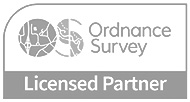Cartography – the art, science and technology of mapmaking – is a process which can result in many different types of map output, for example:
Topographic, Physical or Relief Maps
Such reference mapping is designed to show general features in the landscape, indicating the terrain by using hillshading, hypsometric tints or contours. The majority of Lovell Johns’ base mapping for World and Europe wallmaps use such reference mapping features.
Transport, Road or Street maps
Street mapping is found in town plans and larger scale road atlas mapping, such as the range of Philip’s Road Atlases. We produce road and street mapping for Great Britain, also smaller scale road atlases for Europe.
Political Mapping
A Political map makes use of colours to differentiate neighbouring countries from one another. Such mapping will show major cities and transport links. It will also feature rivers and topographic features but with less emphasis than on the equivalent Physical map.
Thematic Mapping
Thematic mapping highlights a feature or set of features for the audience. The background mapping may be ‘knocked back’ to give prominence to the thematic or feature dataset. Thematic mapping can in some cases by quite abstract in order to convey a particular message.
Illustrated or Pictorial Mapping
Illustrated or pictorial maps use illustrations and graphics to convey key information. Such illustrations can be digitally or hand-drawn and are often used for the tourist and visitor attraction commissions.
Infographics
A map infographic will attempt to convey often larger datasets in combination with charts, graphs and imagery to provide the viewer with a clear and informative picture.
Cartogram
A cartogram is an intentionally distorted map where the variation in the key dataset or theme is shown as an area on the map. Such maps artificially exaggerate the proportions of the geography and are a useful tool for dealing with data themes such as population density.
Charts – Hydrographic and Aeronautical
These are specialist maps for maritime or aeronautical use, containing very little land detail so focusing on information crucial to navigation such as lights, obstructions, shipping channels, flight corridors etc.
Geological Maps
Used heavily in the oil and gas and mineral extraction sciences, such maps show soil and rock types at a variety of scales, from world maps to detailed areas for more specific interrogation.
Climatic and weather Maps
Climatic maps are designed specifically to show weather patterns and will often use generalised geographic areas or satellite imagery.
Choropleth and isopleth maps
Such maps use shading and patterns to indicate changing patterns in the data, with traditionally darker or brighter colours relate to higher densities.
Star charts
A map of the sky to show the position of the constellations.
Cadastral map
Cadastral mapping provides an accurate measure of land quantities, values and ownership. Ordnance Survey MasterMap is a good example of a cadastral map.
Just to wrap up, here’s a general note regarding Large scale and Small scale mapping. A useful tip to remember these concepts is ‘large scale, small area’, so that means a world map is small scale, while a street map is large scale.




